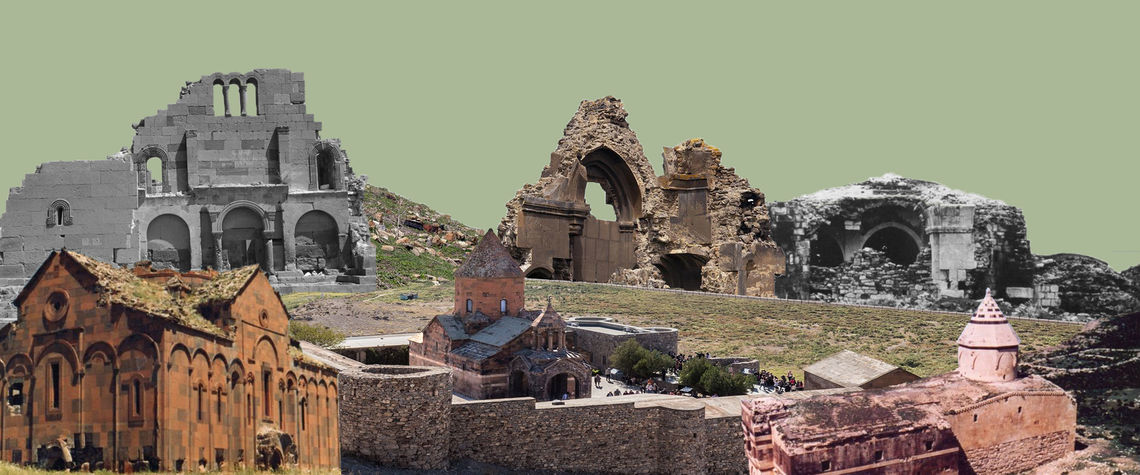
The 268 kilometres of barbed wire, miradors and Russian soldiers that separate Eastern Armenia from Western Armenia is a tragic frontier. It serpentines over deep ravines and canyons, along the Akhurian River, over steppic wasteland. It cuts through Ani, the medieval capital of Armenia, hence severed from the Armenian people by the architects of the Treaty of Kars in 1921; Atatürk traded off the Black Sea port of Batumi to the Soviets for this Armenian symbol. The future president of the Republic of Turkey knew how to deal with historical heritages that piqued Turkish pride, impinged on the rewriting of Turkey’s history, that trespassed the frontier of and encroached upon the glorious role of the Turks in their history.
That tragic frontier also separates from Eastern Armenia the extraordinary monastic complex of Horomos, founded on an ox-bow section of the Akhurian River some 20 kilometers from Ani (and only several from the frontier) in the 10th century, and which today is out of bounds to everyone.[1] The church of Mren fares no better, cleaved from Eastern Armenia by several kilometres of steppe lands. The Haykadzor Church had rotten luck (as so many other nameless Armenian churches strung out on that ‘natural’ border). Ensconced between two barbed wire barriers, out of bounds to Turks and open only on Sundays for morning mass to Eastern Armenians, this proud jewel lies ever so stoically, embalmed in its lonely casket.
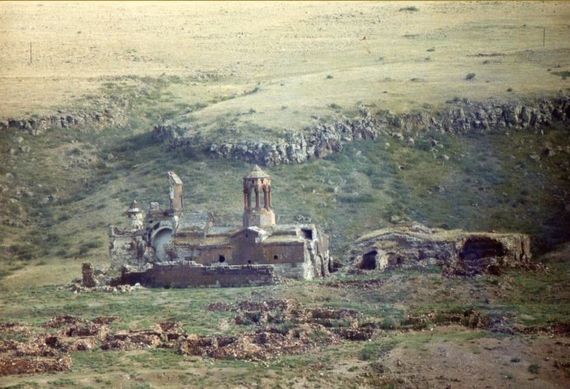
The Church of St. John.
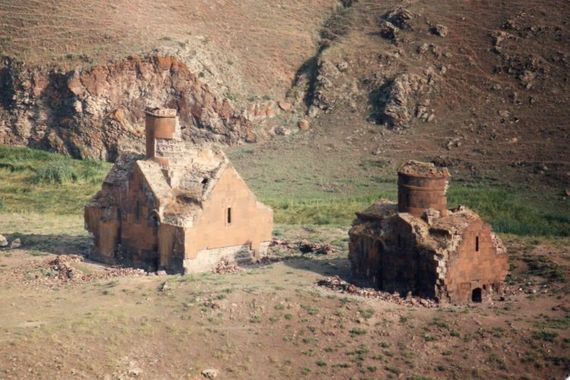
The Churches of Saint Menas and St. George.[2]
Varak Ketsemanian’s essay, The Conceptual Gap: The Case of “Western Armenia” inspired me to write this short article. Being neither Turk nor Armenian, and having travelled and lived extensively in both Eastern and Western Armenia for over 12 years, I believe that my vantage point as an ‘outsider’ offered me splendid opportunities to plunge into the complex network of Turkish-Kurdish-Armenian relationships in Western Armenia. This vantage is not neutral; my articles and essays and book on Turkish-Armenian relationships bespeak my position. Perhaps the Turks, the Armenians and the Kurds have always seen me as an ‘uncommitted outsider,’ as an ‘objective researcher.’ Now if that is what those three aforesaid communities have thought of me during my 12 years of living and travelling in Western and Eastern Armenia, so much the better: I had no objective reason to convince them of the contrary.[3]
Indeed, I spent many of those years traipsing along the two sides of that tragic frontier. Tragic for several reasons: Western Armenia has been settled by a stateless Kurdish population whose instinct of survival over the centuries has driven them to ally themselves, ideologically or militarily, with foreign powers, and because of those exogamic allegiances, has provoked the ire of the Turkish government, who in retaliation has led and still leads punitive expeditions into the Kurdish territories, destroying villages, murdering ‘traitors,’ tracking down ‘terrorists.’ Since 1923, Western Armenia has been and continues to be the theater of a merciless struggle between Turk and Kurd, which has prevented any ‘human narrative’ between Armenian and Turk … between Armenian and Kurd. For according to Turkish officials, any contact between Armenian and Kurd in Western Armenia implies foreign infringement in their internal affairs, and it goes without saying, any ‘prolonged’ contact between Kurd and Armenian can be instrumental for the Kurds as an ideological support in their struggle, however slight or meaningless that support may appear to us. For it is never slight nor meaningless to the Turkish authorities.
Tragic, too, because of the suspicion that enshrouds the minds of both Kurds and Turks living in Western Armenia. On my voyages there in the 1980s and 1990s, difficult years politically and militarily between Turks and Kurds, a time during which few or no Armenian from the Soviet Union travelled in Western Armenia, nor many for that matter from Istanbul, the first question put to me by the Turks or the Kurds was whether or not I was Armenian! No, I was not. The second question was whether or not I had come to Eastern Turkey to photograph and do research on ruined Armenian churches for political reasons! No, as a professor from the Bosphorus University in Istanbul, the photos and my research were to be part of a photo exposition on Medieval Christian Art in Eastern Turkey.[4] It goes without saying that it was only normal that they suspect me of diffusing propaganda against them. Once, however, reassured of my ‘sincerity,’ they left me to my investigations, and on sundry occasions helped me in discovering those churches and monasteries whose location on my maps was erroneous or access to them difficult.
The Turkish and Kurdish discourse concerning Armenians and/or the remains of their ‘lost homeland’ has never been a sympathetic one neither prior to the founding of the Republic of Armenia nor after it. To recover that ‘lost homeland’ seems to me a futile, hopeless fantasy, given the suspicion, contempt, fear and hate that has enshrouded the inhabitants of Western Armenia since 1923. All these emotions arise from the continual conflict and war between Turk and Kurd. Atatürk’s Republic had no place either for ‘traitorous’ Armenians, hence their religious places of worship, nor for the plotting Kurds bent on founding an autonomous or independent state. Only those Armenians who changed their names, who feigned suffering from amnesia, who ‘turned the page’ of the past and set their eyes upon the bright ray of hope of Turkish Republicanism were left, more or less, unscathed to partake of the shiny rays of History in the making. Similarly, only those Kurds who sang the Republican jingle, who adhered to the Turkish language and dress and code of conduct were allowed to live in peace. No word of Kurdistan was to slip through their lips. Neither a word from their language![5] As to the Armenians, always a thorn in Atatürk’s side, albeit there were hardly any of them left in Western Armenia, besides those converted to Islam, their forlorn monasteries, churches and chapels that lay dormant or dead would play no role in that bright, new Republican History, and consequently, left to their fate! If today the visitor chances upon them on the steppes, in the villages or within the ‘urban landscape’ of Western Armenia that is because the Turks and/or the Kurds found excellent use for them. Those that have long since disappeared from Western Armenia, unfortunately did not find either use or favor in the eyes of the Turkish Army or the Kurdish population. So as I journeyed from village to village, from monastery to monastery, visiting many two or three times over the years, the same refrain was repeatedly sung to me: whenever I spoke to a Turk, the Armenian Genocide became the horrendous doings of the Kurd. And whenever I spoke to a Kurd, those tragic butcherings were perpetrated by the Turks. Many Kurds even went so far as to call the Armenians their ‘dear brothers’ … To listen to those refrains whilst gazing upon the gutted churches and monasteries, or upon the expropriated Armenian homes aroused a sense of utter hopelessness as to any possible ‘human narration’ amongst the inhabitants of that desolate land. I believed (and still do) that humaness had/has all but vanished from Western Armenia. Be that as it may, I shall now expose several reasons why many ecclesiastical edifices remain erect, and why partial or full restoration and/or the official upkeep of them has been effected.
The foremost reason is functional. The excellent workmanship of which the Armenian artisan is noted for did not escape the eye of the Kurds or the Turks when they settled down permanently in the abandoned Armenian homes or chapels, when they built or rebuilt their own homes on the deserted lands left to them by the deported or murdered Armenians. How many intact chapels or churches were converted into mosques? Into chicken pens, cow sheds or grain storehouses? How many underwent a dual transformation: the upper part of the intact church became the mosque by simply putting down a false floor, white-washing the frescoes and removing holy relics, whilst the lower part lay abandoned in utter darkness? How many deserted Armenian houses became Turkish or Kurdish homes?[6] That being said, many Turks or Kurds preferred to build their own homes: How many nicely cut ‘Armenian’ stones did I see fitted into the cement or mud-brick walls of Kurdish or Turkish homes in Western Armenia? Many still had Armenian inscriptions on them. Church stone was also extensively used if the dynamite was powerful enough to dislodge them. When invited into these homes, and enquiring about their particular history, the owners informed me that they had purchased them from their former owners (never specified as Armenians), who had long since emigrated to Europe.[7]
The Turks and the Kurds of the villages of Western Armenia are very practical people: Why destroy a church or a chapel when the space or the stones can be used? Why even demolish a church or chapel? Witness Ani, where mosques lie beside churches whose façades have never been transformed, profaned or gutted, as if the soil upon which they had been erected was sacred, and any irreverency or sacrilege towards that soil might provoke the anger of God! Less reverent, but just as practical minded has been the recent restoration, partial or full, of certain ecclesiastical edifices, authorized by the Turkish government but financed by the Armenian community of Turkey.
It must be said here that the full restoration of the Patriarchate of the Holy Cross on the Island of Aghtamar near Van is not due to any love of Armenian culture on the part of the Turkish authorities. It has indeed been nicely restored, and has even witnessed several baptisms (under heavy Turkish police surveillance). Yet, it will never be a church: it remains a museum, and money must be paid to visit its island residence. The restoration of the Church of the Holy Cross has brought to the surface the ambiguity of Turkish-Armenian relationships. Penitence? Contrition? Hardly… It is a gesture which forms part of a modern Turkish discourse that seeks to redeem or rehabilitate their ‘bad conscience’ by offering a modern image of the Turks to the outside world as guarantors or sponsors of ‘their’ Armenian cultural heritage whenever the ‘question’ of genocide is evoked during international meetings, debates or conferences. Similarly with the Kurds, whose modern discourse has weaved a fine thread of ‘sympathy’ and even ’empathy’ towards their Armenian ‘friends'[8] and whose role as caretakers of the ruined churches and monasteries in their mountain villages is also not without ulterior motives, but of a very different nature.
Let us take the case of Varag, since Ketsemanian mentioned it in his essay. Varag Vank is situated some 20 kilometres from Van in its mountainous village. There is no doubt that Mehmet or any other Kurd, do keep serious care of the monastery. Mehmet and the villagers are quite aware of its importance for Armenians, albeit they may ignore its despicable destruction after the battle of Van by the Turkish Army in 1915. In the 1980s there were few visitors. Today, it has become quite a tourist attraction[9], and rightly so, the frescoes on the pillars of the jamatun are of extraordinary beauty and workmanship; it was as if the bishops painted on the pillars stood as the ‘pillars’ of the Armenian Church! As I said, Mehmet is fully aware that what he is watching over is of Armenian heritage, and with this knowledge, and the knowledge that the greatest existential enemy of the Turk remains the Armenian, to curry favour with ‘the enemy’ is the surest way to pique the Turks, to antagonize them, to exercise a strategic, psychological advantage over them by ‘siding’ with the ‘boogeyman’ as Taner Akşam has so eloquently phrased it. The Kurd, thus, will go out of his way to preserve those very symbols that the Turks, overtly or secretly loathe.[10]
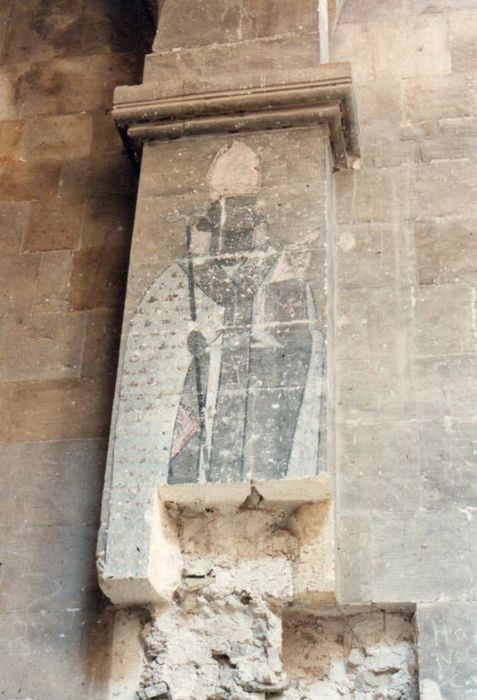
Varag Church: Bishop as Pillar of the Church.
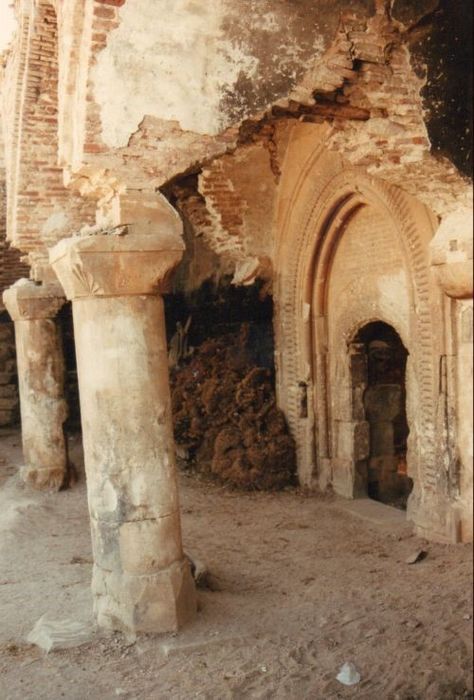
Varag Church: the Jamatun.[11]
Restoration and careful watch over churches or monasteries have also offered Turkish authorities and local Kurds commercial possibilities, not exactly lucrative, for few people visit these ‘sites,’ but nevertheless many means of earning a bit of money. First of all, listed officially as museums, the visitor must pay an entrance fee. Second, organized tours have developed, especially in and around Van Lake, where local organizers have opened agencies, hotels and restaurants for visitors. The Eastern Armenian who visits these ‘museums’ is quickly reminded that their former ecclesiastical function no longer exists, and that their existential shift into museums or tourist sites signifies a subtle expropriation and shift of their ontological value. Armenians who come to Western Armenia are not worshippers but tourists! Not pilgrims but clients…statistics! Gudutz Island, one of the four remaining islands on Lake Van, houses one of the most remarkable Armenian gems of the Middle Ages: the St. John the Baptist Church.[13][14] I managed to reach Gudutz Island in 1989 thanks to the Kurds of the village of Ganjak;[15] the young boys motored me to the island in their fishing boat, a lovely four-hour voyage. Other than the hundreds of seagulls, the island was deserted, and I had many hours to explore the church and its environment.
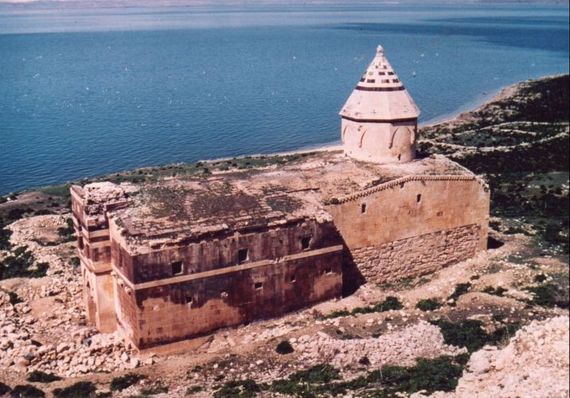
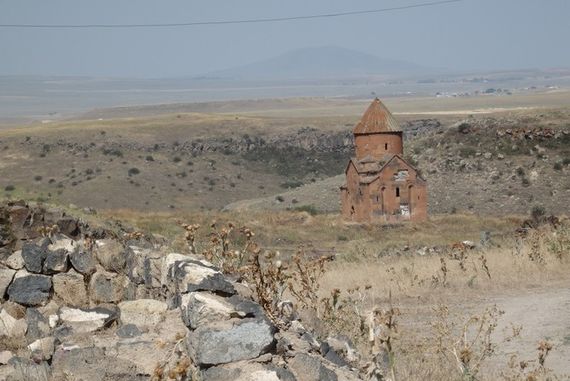
Haykadzor Church imprisoned between two barb-wire barriers (2015).
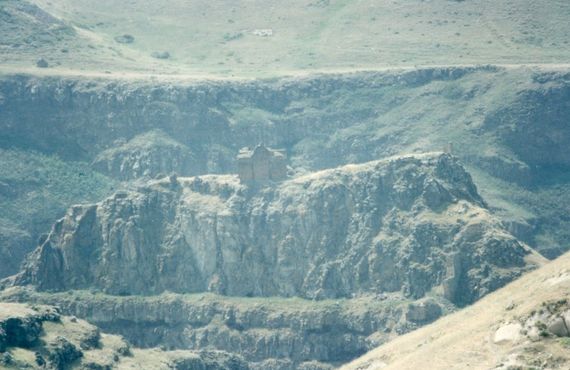
Surp Zak’aria situated on the Peninsula of Kız Kalesi at Ani.[21]
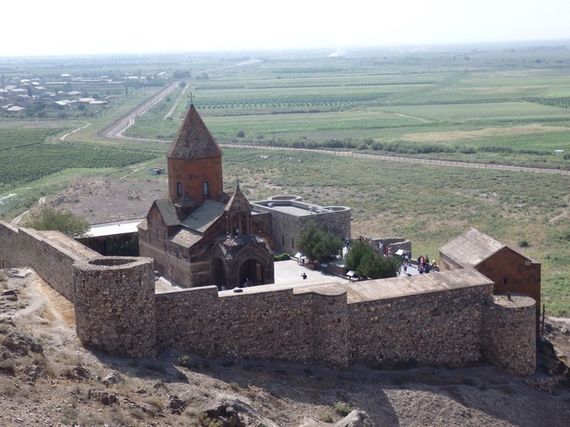
Khor Virap against the backdrop of Mount Ararat (2015).
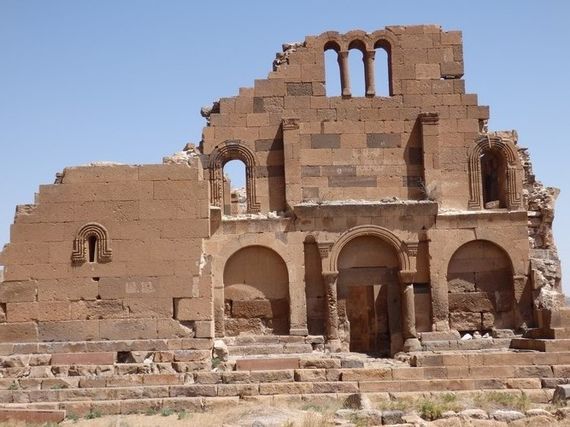
The fabulous façade of Yereryuk Church at Ani-Pemza (2015).
The village of Ani-Pemza lay in absolute silence simply because there was hardly a soul there. A villager from whom I asked directions made no mention of the frontier, nor of the Turks. Neither did he comment on the church. It was as if he had lost interest in the church, it standing so desolate, so lonely. Apparently, many villagers had ‘migrated’ to Yerevan, abandoning their church to the auspices or aegis of Western institutional funds that enable ‘underdeveloped’ countries to preserve and restore their national heritage. This last sentence is meant to be ironic. Only the Armenians possess the craftsmanship, will and finances to preserve and restore their national heritage. The time will come when they turn their eyes and talent to Yereruyk. Armenians have no need for ‘charitable’ mentors… to be patronized…
A Final Word
Western Armenia or Eastern Turkey? This ‘lost homeland’ has been a thorn in Turkey’s side since 1923; why pull it out by attempting to ‘reason’ with the Turks or the Kurds? The thorn reminds the Turks and the Kurds of a people who lived and thrived in Turkey, and who played an enormous role in the unfolding of Turkey’s History, and this in spite of the silence, scorn and distortion voiced by Turkish intellectuals and historians. Western Armenia is the Memory of Armenians; Eastern Turkey is the bad conscience of the Turks and the Kurds! Memory should not be interpreted as wistful nostalgia here, but as a responsibility towards the Past (and not just one’s past!), as a vocation to the voices of that Past, however faint their muffled murmurs reach our ears.
The thorn should be sustained, driven deeper into the flesh of the Turkish side until they acknowledge the genocide of the Armenians of Eastern Turkey and avow openly, politically, to the full participation of Armenians in the making of the History of Turkey. There is no compromise to be made here, nor sympathy to be shown if this avowal is denied or rebutted. If and when the genocide is recognized, then there may be room for compromise and sympathy; that is, for diplomacy and dialogue. Dialogue signifies mutually acceptable political and cultural exchange; bilateral acquiescence of each other’s role in Western Armenia or Eastern Turkey. It is thus senseless to dream of recovering a ‘lost homeland.’ This is sterile or hollow nostalgia, more a nightmare than a dream because it prevents the dreamer from seeking horizons which only the future can make emerge. On the other hand, if the genocide is acknowledged, it is then quite sensible to believe in and hope for the restoration of certain monasteries and churches, and the gradual opening of their doors to Armenian worshippers from Eastern Armenia, Istanbul and the Diaspora. Churches then will become lieus of faith and not museums. Armenians and other Christians will then become pilgrims and not tourists or clients. Perhaps at that time a true ‘human narrative’ will be written by which the Armenian is recognized as an actor of that narrative, and by that recognition, uncover or dig up his or her narrative identity within that ‘lost homeland’ with and among those who are presently living there: Kurds and Turks. For now, Turks and Kurds are locked in terrible ideological and military warfare that Eastern Armenians should avoid. It is not their battle. Why be dupe to the interests of certain parties, and be bartered like pawns in their merciless game?
There is certainly a ‘human narrative’ to be acted out and written down in Western Armenia by Armenians of the Republic of Armenia, by those Armenians, too, living in Turkey or residing abroad. [24]But before this narrative is written, a genuine identity must be forged, not as a tourist who visits museums or remote relics of the past, but as a pilgrim of faith who prays in their places of worship without surveillance, without fear, without the onus of Turkish and Kurdish bad conscience.
An equitable and shared Memory of the Past is what peoples and communities of very different origins have written within the framework of their countries. These narratives constitute what is called History. Neither Turks or Kurds are ready to write their narratives with Armenians, and for this reason no History of Turkey has yet to be written. It will be written the day the Eastern Armenian convinces Turks and Kurds that to open a frontier demands the cleansing of one’s bad conscience. That tragic frontier is Turkey’s bad conscience: the Armenians need not console them nor sympathize with them. The very existence of Armenia – Western and Eastern – is enough to remind them what that cleansing entails. It will be long, but a bad conscience has never triumphed over Memory.
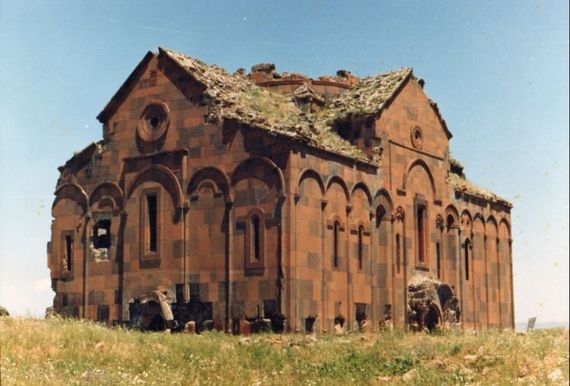
The Cathedral of Ani before the Earthquake in 1988.
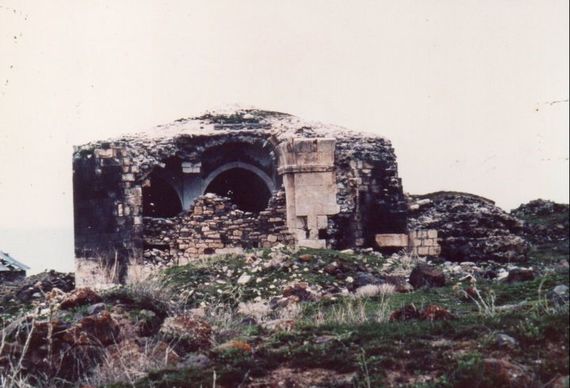
The scant Remains of the Hermitage of St. George on the Island of Lim (1990).
————-

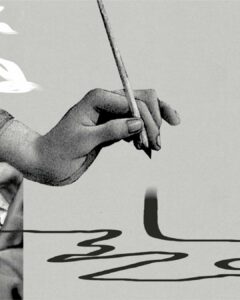
Superb article. So educational and invoking of envy. This made me want to go to Eastern Anatolia again, with fresh eyes.